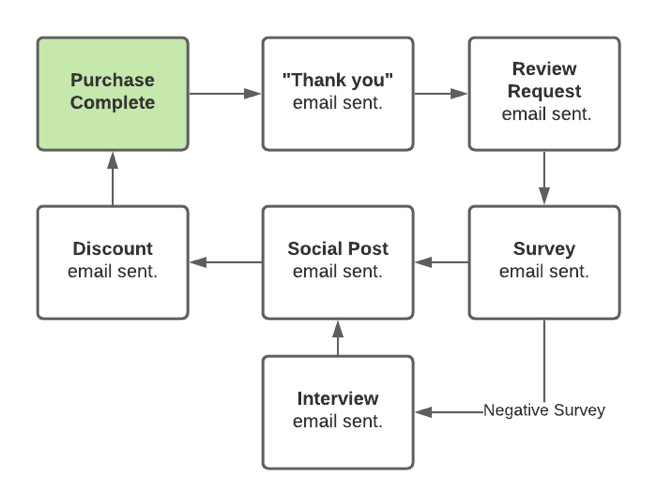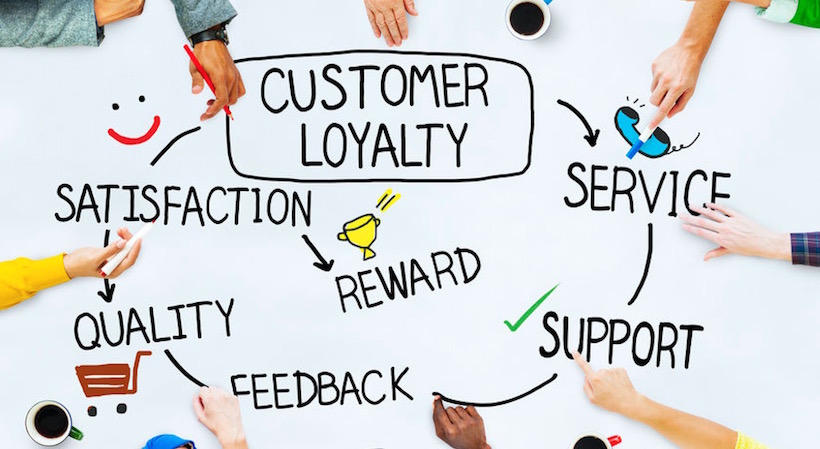When starting a new business, many of us tend to focus our time and effort on scaling and getting more and more customers on our website or through the door. As founders, we should be focusing on winning a few loyal customers who could teach us valuable lessons and help us grow our business further.
In this article, we’ll be looking at what we can learn from our first customers in terms of validating our startup idea. Once we’ve explored generating those first initial sales, we’ll move on to how we can turn those loyal customers into a free marketing machine.
Your first customers
Your first customers are the hardest to acquire and usually require a large amount of patience. You’ll probably be really excited that your startup has finally launched, and it’ll be nerve-wracking waiting for your first customer to make a purchase. When you finally get your first purchases, you’ll most likely want to scale up and start earning more, but we should take a step back and make sure we validate our idea and learn what those customers want from our product or service.
Create a purchase loop
When we start a business, it’s easy to forget about the post-purchase experience we present to our customers. But this is just as important as our sales funnel. We need a purchase loop, so that when someone purchases something from our website, our post-purchase flow is ready to accommodate them.
Below is an example of how a typical post-purchase experience should look:

Validating your idea
You may think that acquiring your first few customers is validation in itself. However, we want to make sure we’re providing exactly what our customers want, and that our customers are utilizing our products or services for the reasons we expected.
Below, we’ll go through how to rapidly validate our idea using these first customers.
- Write down assumptions: When you create your startup, you usually have a set of assumptions about who your users are and what they are using your products or services for. It’s great to write these down and put yourself in your user’s mindset. You can usually do this by answering the following three W’s: Who is your customer? What problems are you solving? What are your key features?
- Test your assumptions: Start interviewing your first customers. It’s an easy way to test your assumptions, and customers will be more inclined to jump on a call if you offer them a coupon code or discount on their next order from you. Ask questions based on your assumptions and see if your customers match them. If they do, brilliant! If not, you’ll have some valuable insights into why your customers are using your product or shopping with your store.
Free Digital Skills Training: From Customer Experience to the Right CRM
Learn first, scale later
Once we’ve acquired our first customers, tested our assumptions and created a post-purchase loop setup, we should already be starting to learn more about these customers, and getting our roadmap ready to start converting first customers into loyal customers. We can do this in numerous ways, by researching how our customers are using our site or product, learning about what features they’re requesting, and providing extra value for no cost.
Customer research
No matter what type of business you’ve launched, you should research your customers constantly. You can conduct simple iterative qualitative research in numerous ways, such as:
- Visitor screen recording: Screen recording is a simple quantitative user research tool which explores how our customers are using our product or service. This will enable us to focus our efforts on fixing annoyances for our customers such as rage clicks or features they’re missing. You can do this easily using free services such as Hotjar or Fullstory.
- Customer interviews: Following up on your first validation interviews, you should be interviewing customers regularly, and not just those customers who aren’t converting on our service or need additional assistance.
- Provide extra value: These ideas don’t need to be grandiose, but they can turn a customer into a brand advocate. You could send handwritten postcards to your customers, send personal emails from your founder email address, add small freebies to orders, send them a birthday note, or interview a customer as a case study.
12 Keys to Choosing and Building Your Best Side Hustle
From loyal customers to brand advocates
We’ve tested our assumptions and have learned more about our first customers. We should now be on the way to finding our first few loyal customers. These can be classed by how much a customer returns to our service or how regularly they purchase from our store. Once we’ve identified our loyal customers, it’s time to convert them into brand advocates and get them to do the marketing for us.
- Celebrate loyalty: Offer promo codes or discounts if a user has remained over a certain amount of time. Or create a case study or social media post around your product and how they utilize it. Don’t forget to tag them in your post. This technique pays off, as it pushes customers to retweet or share on their social channels.
- Create referral schemes: Referral schemes are a tried and tested method of creating brand advocates, yet so many companies don’t create attractive enough benefits for sharing. The best referral schemes usually create urgency around a mutual discount for a friend and for the loyal customer.
- Engage in public feedback: Twitter and Facebook are great feedback channels that brands can utilize. You may think that public feedback is generally negative, but brands that actively engage in both negative and positive feedback through online channels naturally instill trust in current and prospective customers.
Once you’ve established a base of loyal customers, you should start seeing them evolve into brand advocates. If you’ve successfully created a small batch of loyal customers, you’re well on your way to creating a successful business.
Originally published Oct. 26, 2020.






